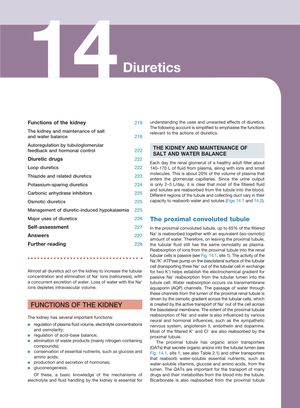Diuretics
September 2017
in “
Elsevier eBooks
”

TLDR Diuretics help the body get rid of excess salt and water by acting on the kidneys in different ways.
The document from 2018 provides an in-depth explanation of how diuretics function to increase the excretion of sodium ions (Na+) and water by targeting different parts of the renal tubule in the kidneys. It describes the action of various diuretic classes, including loop diuretics, which can inhibit up to 20-25% of Na+ reabsorption in the loop of Henle; thiazide diuretics, which act on the distal convoluted tubule and are less effective in cases of low glomerular filtration rate; potassium-sparing diuretics, which preserve potassium levels but may cause hyperkalaemia; and carbonic anhydrase inhibitors, which are weak diuretics with other medical applications. The document also covers the side effects associated with each diuretic class, such as hypotension, electrolyte imbalances, and ototoxicity for loop diuretics, and metabolic disturbances for thiazide diuretics. It does not include specific study numbers or patient data, focusing instead on the pharmacology of diuretics and kidney function regulation.